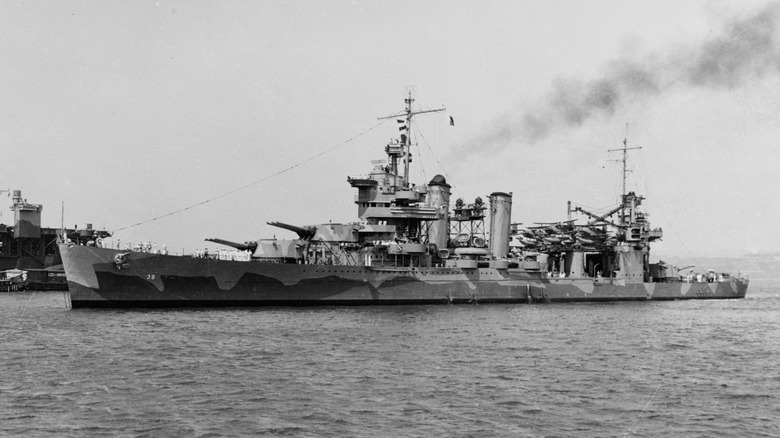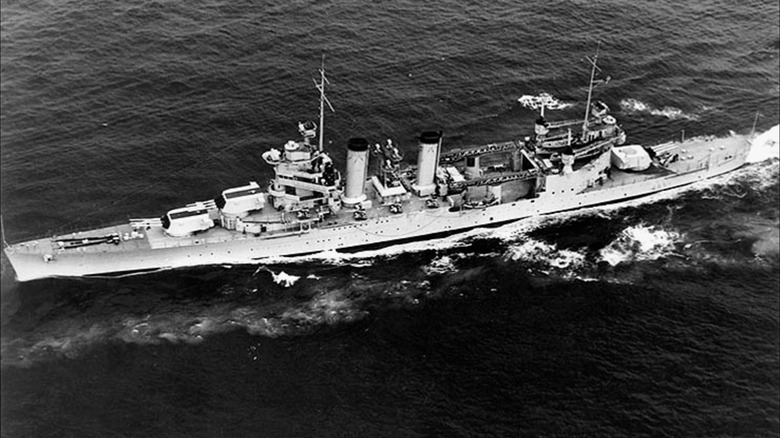Lost WWII Ship USS Quincy Finally Seen Again For The First Time In Decades
World War II was a battle fought on all fronts. Dogfights across the skies, devastating battles on land, and, of course, skirmishes on the high seas all featured in the globe-spanning conflict. Given the nature of ocean exploration at the time, many shipwrecks from the era have yet to be recovered, or have only seldom been seen in the almost full century since they sank. For instance, the imposing USS Quincy — a United States Navy New Orleans-class cruiser that, admittedly, isn't quite regarded as one of the most legendary ships of WWII — has rarely been observed since it went under back in 1942.
The USS Quincy's first and last sighting was a 1992 expedition led by Dr. Robert Ballard, when it was discovered. Thirty-three years later, the crew of the Exploration Vessel Nautilus took an in-depth look at the sizeable shipwreck during the Maritime Archaeology of Guadalcanal expedition. This non-invasive observation of the Quincy was conducted via the Nautilus' camera-equipped vehicle, which documented the ship's remains, including aspects such as the cannons and the bridge. The EVNautilus YouTube channel then shared footage of the undersea exploration project, providing new high-definition images and videos of the Quincy's wreck.
It may have taken 30 years for the Quincy to receive more visitors, but at least technology has evolved enough to capture great images of what's left of the ship. It's even easier to appreciate the E/V Nautilus footage with the story of the Quincy and its demise in mind.
The story of the USS Quincy and how it sank
The USS Quincy sailed for the United States Navy during WWII, but its story begins before the nation's involvement in the war. It was constructed in the mid-1930s in Quincy, Massachusetts, and was first put to use in 1936, being sent to the coast of Spain during the Spanish Civil War. Some time later, the Quincy returned to the U.S. for repairs and upgrades, continuing to serve the Navy throughout the remainder of the decade. Come the 1940s and the start of U.S. involvement in WWII, though, the ship got busier — and would reach its end in a sudden and violent battle.
At the start of the 1940s, the Quincy visited several nations. It patrolled the Denmark Straits, made several trips to Newfoundland, and notably helped destroy several Japanese installations, including a vital oil depot, during the bombardment of Lunga Point. The USS Quincy's end came when it was patrolling between Florida Island and Savo Island on August 9, 1942. It was taken by a surprise attack from Japanese naval forces, ultimately sinking after its weaponry was destroyed and it suffered sustained damage to its hull. 379 crewmembers were killed, while 650 survived. Of those 650 survivors, 220 were wounded.
There are numerous sunken U.S. Navy aircraft carriers, cruisers, and more strewn about the ocean floor. The USS Quincy is one of many that we've managed to keep tabs on, helping ensure that its role in World War II and the story of its destruction have yet to be forgotten.

